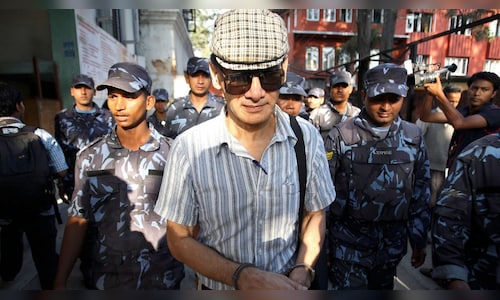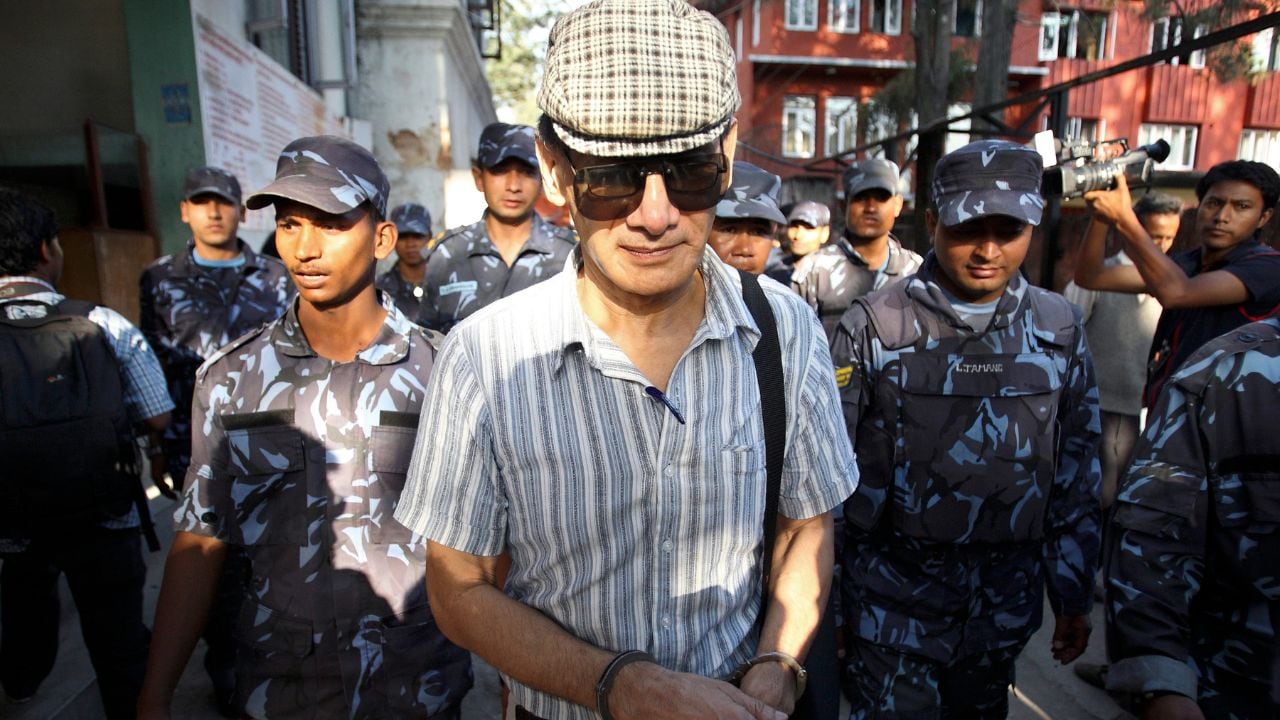

The series, told through the eyes of rookie jailer Sunil Gupta, explores the gritty reality of Delhi’s Tihar Jail, with actor Sidhant Gupta stepping into the shoes of the infamous serial killer.
But who was Charles Sobhraj? How did he become one of the most notorious criminals of the 20th century?
In the 1970s Bangkok, two Dutch backpackers, Henk Bintanja and Cornelia Hemker, found themselves enchanted by a gem dealer named Alaian Gautier. They were unaware that Gautier was just one of the many aliases of Charles Sobhraj. Days later, their lifeless bodies — strangled and burned — were discovered on the roadside near Ayutthaya, about 80 km north of Bangkok.
However, by the time authorities pieced together the crime, Sobhraj had vanished.
This gruesome episode was just one chapter in a life steeped in crime. Born in 1944 in Saigon (now Ho Chi Minh City, Vietnam), Sobhraj’s early years were a patchwork of abandonment. His father left when he was a child, and his Vietnamese mother subsequently remarried a Frenchman. As a mixed-race child, Sobhraj faced discrimination and alienation. By his teenage years, he turned to petty crimes.
With time, his criminal ambitions grew.
After several stints in juvenile detention and prisons in France, he expanded his operations across Europe and Asia committing robberies, car thefts, and smuggling. His ability to manipulate, charm and eventually blend in made him a dangerous conman.
While in Paris, he met Chantal Compagnon, and together they travelled across Europe and South Asia. Even after Compagnon gave birth to their daughter, the couple’s involvement in illicit activities continued unabated. Sobhraj’s criminal exploits escalated further in Pakistan and Afghanistan, where he murdered a taxi driver. In Bangkok, he opened a curio shop, which served as a front for stealing from unsuspecting customers.
A brief arrest in Delhi while attempting to rob a jewellery store didn’t slow him down either. He managed to secure bail and promptly fled to Kabul, abandoning Compagnon and their daughter, who eventually returned to France. Sobhraj spent the next two years on the run, moving between Turkey, Greece, and Thailand.
In the 1970s, Sobhraj set his sights on the ‘Hippie Trail’, a popular route for Western backpackers travelling through South Asia. Fluent in multiple languages and equipped with a collection of forged passports, he preyed on young travellers. He would befriend them, often offering food or drinks laced with poison. Once incapacitated, his victims were easy targets for robbery or murder.
According to his biographers, Sobhraj confessed to at least 12 murders committed between 1972 and 1976, though he later retracted these admissions. While he acknowledges drugging and robbing his victims, he now denies being responsible for any killings. The true number of his victims remains uncertain, but he was convicted of only two murders. Many of his victims were reportedly overdosed, strangled, drowned, or burned.
Sobhraj returned to India in 1975, where he met two key figures in his life: Marie-Andrée Leclerc, a Canadian woman who would become his second wife, and Ajay Chowdhury, his accomplice. The trio embarked on a spree of murders and thefts.
One of Sobhraj’s first known victims was Teresa Knowlton, a 21-year-old whose body was discovered floating in Pattaya, dressed in a bikini. She was followed by Vitali Hakim, whose burned remains were discovered roadside. When Hakim’s girlfriend came searching for him, she too fell victim to Sobhraj, her lifeless body floating eerily in the water, also clad in a bikini.
After killing Dutch couple Henk and Cornelia in Bangkok, Sobhraj and Leclerc used their victims’ passports to enter Nepal, where they murdered two more tourists—Laurent Carrière and Connie Jo Bronzich—before fleeing to Thailand. Disguised as gem merchants, Sobhraj and Leclerc operated in Malaysia with Chowdhury, who mysteriously disappeared soon after. Many believe Sobhraj orchestrated Chowdhury’s murder.
In 1976, Sobhraj returned to India. By this time, the “bikini killer” had an international arrest warrant against him. He bungled when he miscalculated the dose while drugging a group of French tourists in Delhi. He was subsequently arrested and imprisoned in Tihar Jail for 12 years. He was also charged with the murder of another French tourist and an Israeli man, which were later overturned.
Even behind bars, his manipulative charm did not fade. He bribed guards and lived in relative comfort. But in 1986, Sobhraj orchestrated a dramatic escape from the 271-acre Tihar Jail. He faked a birthday celebration, feeding drugged food to the jail staff and walked out. The move, many experts believe, was calculated to avoid extradition to Thailand, where he faced a possible death sentence.
After the escape, he hid in plain sight and was later recaptured in Goa.
Two decades after his initial arrest, Sobhraj walked free. He returned to France and led a quiet life.
But not for long.
Sobhraj returned to the spotlight in 2003 when he inexplicably went back to Nepal, a country where he was still wanted for murder. Arrested in Kathmandu, he was convicted for the 1975 killings of Laurent Carrière and Connie Jo Bronzich and sentenced to life imprisonment. For nearly two decades, Sobhraj remained behind bars in Nepal.
In 2022, citing his advanced age and declining health, Nepalese authorities released him. On December 23, 2022, the crafty criminal returned to France as a free man. Crime enthusiasts around the world continue to debate unanswered questions and speculate on the full extent of his deeds. However, the true weight of Sobhraj’s story lies in the lives forever lost, his supposed victims. Some remembered, their stories told, others nameless, their fates known probably to only The Serpent.



